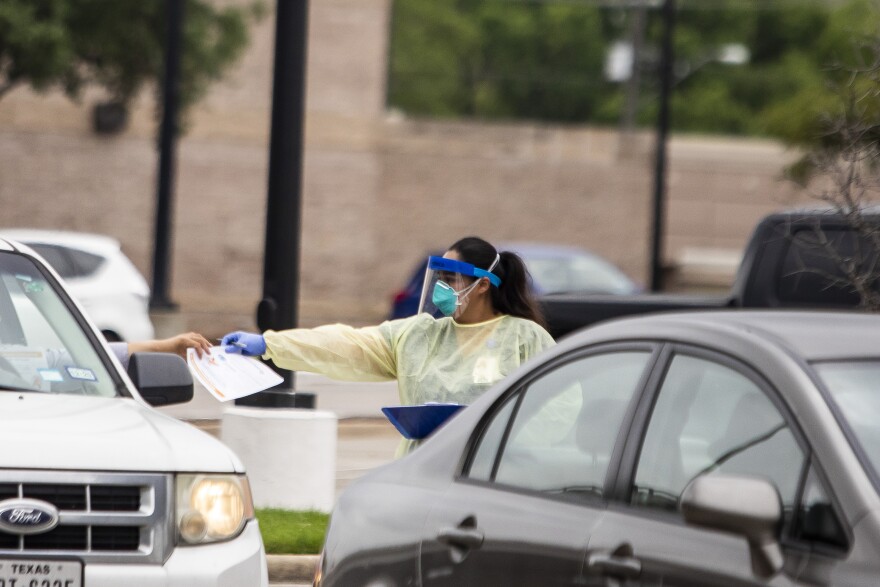Daily life for Texans has changed drastically in the past week. School districts have closed for at least the rest of the month. Several cities – and then the governor – ordered bars and restaurant dining rooms to close. Mass gatherings have been limited to no more than 10 people. Big, annual events have been canceled.
As testing ramps up in the state and the number of COVID-19 cases increases, you’re probably seeing a lot of technical terms in the news: social distancing, pandemic, community spread. What do they all mean?
Jackie Dudley, a professor of molecular biosciences at UT Austin, has been teaching the study of viruses for more than 30 years. KUT asked her to talk us through some of these terms.
Community spread
This phrase means people have been infected with a virus in a given area, and they may not know how they got it. So, people are not necessarily getting a disease from traveling to places where it is prevalent. They’re getting it without leaving their own community.
“Just as when you get a cold or you get the flu, you often don’t know who gave it to you,” Dudley said.
Pandemic
COVID-19 is now considered by the World Health Organization to be a pandemic. The term is used to describe an outbreak of a disease that’s increasing on a worldwide scale. It differs from an epidemic, which is used to describe the increased incidence of disease in a wide area, but not globally.
Presumptive positive
You might have seen some cases of COVID-19 deemed “presumptive positive,” especially when the first local cases were being reported. This label is used when a state or local lab performs a test and finds it positive. A case is considered confirmed after it's been sent to a Centers for Disease Control and Prevention lab and deemed positive.
You may not be seeing this term much anymore. As of March 14, the Food and Drug Administration is no longer requiring public health labs that use the CDC’s test to submit their samples to the agency for confirmation.
Social distancing
This term describes a set of practices that help slow the spread of the disease. It means avoiding crowds, not shaking hands, staying home when you’re sick and standing several feet from people. That distance, health experts say, is 6 feet.
“If you cough, sneeze, even speak with a little spittle, then it’s thought that those can go out into the environment about 3 feet," Dudley says, "so [health experts are] doubling that distance to minimize the possibility that someone would be infected."
Self-quarantine
People who might have been exposed to COVID-19 should practice self-quarantine, since there’s a possibility they’ve contracted the virus and could spread it to others. So maybe you recently traveled to a high-risk area or you’ve been around someone who has the illness.
To self-quarantine, you should stay home, not have visitors and stay at least 6 feet away from others. Ideally, this should be done for a period of 14 days, Dudley says.
Isolation
People who have been diagnosed with COVID-19 should isolate. This means keeping away from people who are not infected. This is done either at home or in a hospital setting. Medical staff treating an infected patient wear special gear to protect themselves.
Contact tracing
This is the process of notifying people they have been exposed to an infected person. When a person is infected, authorities identify anyone the person has been around – like family members or co-workers – and then notify them of their possible exposure, according to the World Health Organization. Quarantine or isolation may be required for some exposed individuals.
The goal is to try to minimize the number of people who could potentially pass on the virus in the community, Dudley said. Of course, patients could forget some people they were recently around.
“It’s not going to be perfect, but it’s better than just ignoring the fact that this person who was really ill has now transmitted,” Dudley says.





